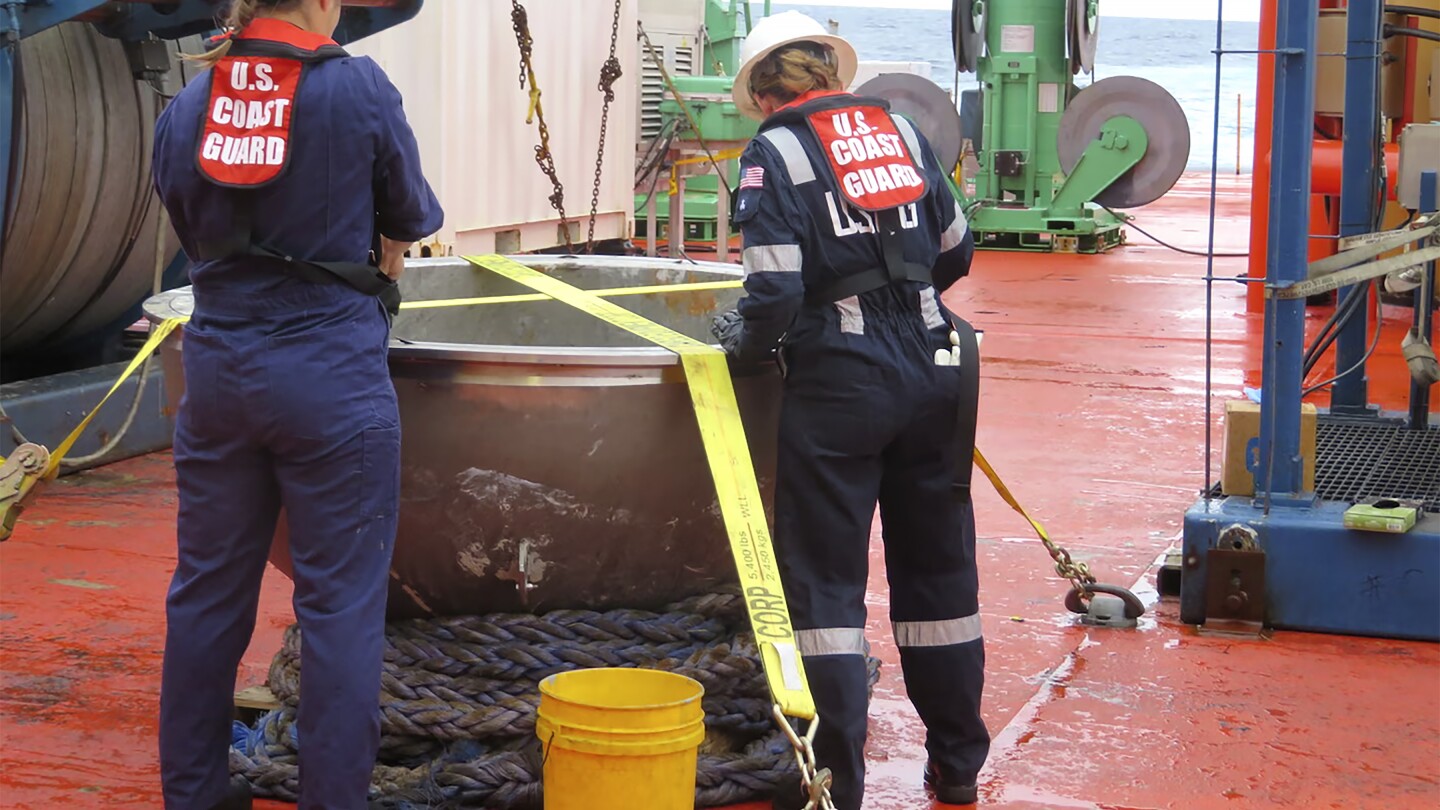The Coast Guard has recovered remaining debris, including presumed human remains, from a submersible that imploded on its way to explore the wreck of the Titanic, killing all five onboard, deep beneath the Atlantic Ocean’s surface, officials said Tuesday.
The Coast Guard said that the recovery and transfer of remaining parts was completed last Wednesday, and a photo showed the intact aft titanium endcap of the 22-foot (6.7-meter) vessel. Additional presumed human remains were carefully recovered from within Titan’s debris and transported for analysis by U.S. medical professionals, the Coast Guard said.
The salvage mission conducted under an agreement with the U.S. Navy was a follow-up to initial recovery operations on the ocean floor roughly 1,600 feet (488 meters) away from the Titanic, the Coast Guard said.



Also, there’s a pretty good chance that data from the imploded submarine can go towards making future submarines safer. But it’s harder to get that data without recovery
It’s not a new unproven technology, there’s no “data to help future submersible”. They CAN make it safe, they’re ADVISED to make it safe, they’re PROTESTED to make it safe.
But they CHOOSE not to because it’s cheaper.
Everyone in-the-know knew it was bad and unsafe and will probably ended in tragedy. They speak up, they protest, and they got punished by the one in charge.
Really
You really want me to think that engineers won’t find it useful at all
In some cases that’s exactly what happens. This was a known scenario and the failure was predictable.
It would have been different if they followed all industry standards and the sub still failed - that would produce valuable data that could contribute to making our understanding of the science, as well as prevailing industry standards, better.
In cases like this you can gather all the remains and data you want, and analyse it, but only if you want to confirm what we already know - reproducing observations and confirming hypothesis is an important part of science, but everything costs money, and at some point you need to triage the studies you want to put money into.
They can still learn something from the materials by looking at how it failed (mostly because the frequency of tests of larger objects at these pressures is limited), but there’s not likely going to be anything surprising, just another data point to help calibrate some material science formulas
Everyone knows exactly how it failed.
They used GLUE to stick carbon fiber to titanium.
All three of those components behave very different under pressure.
Every engineer warned them against the use of carbon fiber and the bonehead CEO insisted because he liked it.
It’s literally an ego trip that got 5 people killed.
Obviously it would fail, yes, but where the failure started and how it propagated can still be interesting. There’s a reason new car models get crash tested, you still want to double check the simulation results. Submarines don’t usually get crush tested because they’re built with huge safety margins instead, bigger margins than you can put in cars
What are you even talking about?
There is no technically beneficial reason to using carbon fiber in a submarine hull. It won’t happen again, and it shouldn’t have happened in the first place.
It’s like making a car out of Swiss cheese, it’s just pointless.
The data is not important.
Do you think the only place it would be useful is for other submarines? It’s still materials science. Any place those same materials are used could in theory benefit (again, probably not anything notable, but data on how it behaves in extreme circumstances can be useful anyway)
Not the guy you replied to, but… Yeah? There’s not a lot of valuable data in that wreckage to be gained. At least not any data that wasn’t already anticipated, known about, or already tested prior. Like the previous guy said, a multitude of experts said it was a bad idea. People who worked for the company and spoke up about the issues where fired.
The entire internet mocked the situation because the man had the hubris to think he knew better than decades of scientific and engineering testing and safety of the materials being used. Many engineers even sent letters to the guy telling him to not use certain materials because they are and have been known and proven to fail at the types of pressures, temperatures, and environment he wanted to take them too.
The only valuable data that I can even image being in that wreckage is figuring out what exactly failed first, the window that wasn’t rated for that pressure. Or the carbon nanotube hull that engineers already knew would fail since carbon nanotubes are not good at repeated exposure to stress and microfractures and breakages.
There really isn’t that much data to be gathered here that hasn’t already been tested and proven multitudes of times before. Except maybe seeing how well the game controller held up if they can even find it
I mean kind of… it’s like trying to make a kamikazi plane safer. Literally everyone with a shred of knowlege knew it was going to fail and told him, he just did’t listen.
It sounded to me like it was more of arrogance (‘I know better than everybody else’) than cost cutting. Although the part about not getting the design certified was probably for cost cutting and time saving reasons.